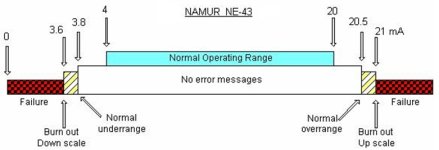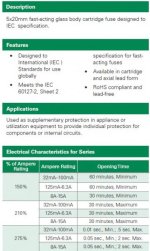stern
Member
Hello,
I have 4-20mA 2-wire transducers powered using external power supply (passive analog module inputs).
How can I protect PLC inputs from short circuit at sensor side?
As stated in manual the max input current (destruction limit) is 40 mA, input impedance 250 Ohm.
Thanks.
I have 4-20mA 2-wire transducers powered using external power supply (passive analog module inputs).
How can I protect PLC inputs from short circuit at sensor side?
As stated in manual the max input current (destruction limit) is 40 mA, input impedance 250 Ohm.
Thanks.





